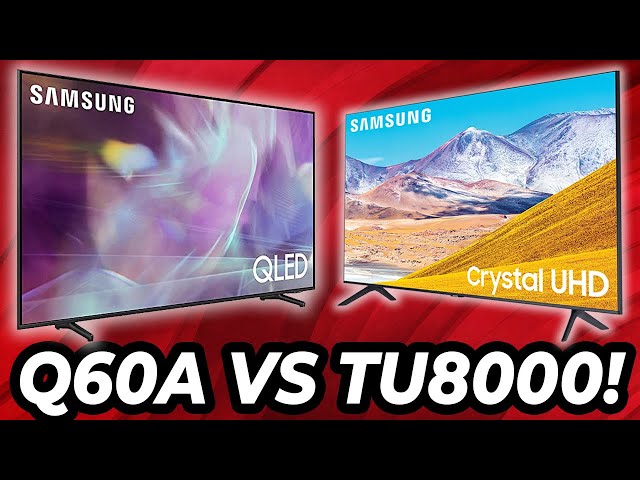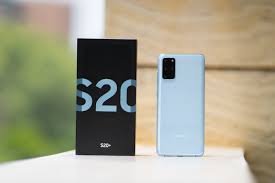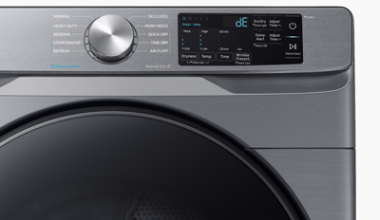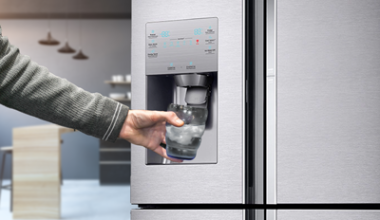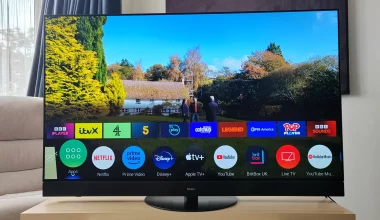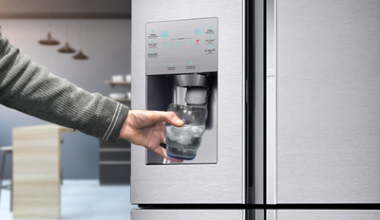When choosing between Crystal UHD and QLED, consider your needs and budget. Crystal UHD TVs offer solid picture quality and are budget-friendly, perfect for everyday viewing. QLED TVs, on the other hand, use Quantum Dot technology for superior colour accuracy, higher brightness, and better viewing angles. They’re ideal for high-end gaming and movie experiences but come at a higher price. If you want excellent performance and top-notch picture quality, QLED is the way to go. For more insights into the specifics and to make an informed decision, keep going.
Understanding Crystal UHD
Understanding Crystal UHD involves examining its core technology and how it enhances your viewing experience. Crystal UHD, primarily a branding term used by Samsung, refers to TVs that utilize a proprietary Crystal Processor 4K. This technology focuses on delivering a sharp, vivid picture quality by processing colours more efficiently.
When you’re watching a show or movie, you’ll notice that Crystal UHD TVs offer a more natural colour palette. The Crystal Processor 4K works to reduce noise and boost resolution, ensuring that even non-4K content looks impressive. This means that whatever you’re watching, you’ll enjoy a clearer, more detailed image.
Another aspect you’ll appreciate is the user-friendly interface. Crystal UHD TVs come equipped with Samsung’s Tizen operating system, which offers a seamless browsing experience. You can easily navigate through apps, adjust settings, and find content without any hassle.
Moreover, these TVs often come with HDR (High Dynamic Range) support, which enhances contrast and colour accuracy. As a result, you get brighter highlights and a broader range of colours, making scenes appear more lifelike.
Understanding QLED
When you dive into the world of QLED technology, you’ll find that it revolves around Quantum Dot technology to deliver enhanced colour and brightness. Quantum Dots are tiny semiconductor particles that emit light when exposed to a light source. This technology allows QLED TVs to produce a wider colour gamut and higher brightness levels compared to traditional LED TVs.
Here are some key features that set QLED apart:
- Enhanced Color Accuracy: Quantum Dots enable QLED TVs to display more precise and vibrant colours, closely matching real-world hues.
- Superior Brightness: QLED TVs can achieve higher brightness levels, making them ideal for brightly lit rooms and HDR content.
- Longevity: Quantum Dot technology is stable and less prone to burn-in, offering a longer lifespan compared to OLED displays.
- Energy Efficiency: QLED TVs are generally more energy-efficient than other high-end display technologies, which can reduce your electricity bills.
QLED technology also incorporates advanced backlighting techniques, like full-array local dimming, to improve contrast and black levels. This means you’ll enjoy deeper blacks and more defined details in darker scenes.
Picture Quality Comparison
Comparing picture quality between Crystal UHD and QLED, you’ll notice significant differences in colour vibrancy, brightness, and overall visual experience. Crystal UHD TVs utilize standard LCD technology enhanced with a crystal display, which offers sharp and clear images. However, QLED TVs take it a step further with Quantum Dot technology, delivering more precise and deeper colours.
When you watch content on a Crystal UHD TV, you’ll enjoy a solid picture quality that’s great for everyday viewing. The images are crisp, and the resolution is excellent for most uses, including streaming and gaming.
Yet, when you switch to a QLED TV, the difference becomes clear. The Quantum Dot layer in QLEDs enhances the colour accuracy and contrast, making images appear almost lifelike.
QLED TVs also excel in handling various lighting conditions, reducing glare and providing consistent picture quality. Crystal UHD TVs perform well but may struggle in very bright rooms, where the picture can appear washed out.
Additionally, QLEDs have better motion handling, reducing blur during fast-moving scenes, which is perfect for sports or action movies.
Colour and Brightness
You’ll immediately notice a stark difference in colour and brightness between Crystal UHD and QLED TVs. QLED TVs use Quantum Dot technology, which enhances colour accuracy and brightness. This means you’ll get more vibrant and lifelike colours when watching your favourite shows or movies.
On the other hand, Crystal UHD relies on standard LED technology, which may not offer the same level of colour precision or brightness.
When comparing the two, here are some key points to consider:
- Colour Range: QLED TVs typically have a wider colour gamut, offering more shades and hues than Crystal UHD TVs.
- Brightness Levels: QLED TVs can achieve higher brightness levels, making them better suited for rooms with a lot of ambient light.
- HDR Performance: High Dynamic Range (HDR) content looks more stunning on QLED TVs due to their superior brightness and colour capabilities.
- Energy Efficiency: Crystal UHD TVs generally consume less power, which could be a factor if you’re concerned about energy usage.
Viewing Angles
Shifting focus from colour and brightness, another important aspect to consider is the viewing angles of these TVs.
When you’re watching TV alone, viewing angles mightn’t be a big deal. However, if you often have friends or family over, everyone should get the best possible picture, no matter where they’re sitting.
Crystal UHD TVs typically use VA (Vertical Alignment) panels. These panels are great for contrast but fall short when it comes to viewing angles.
If you’re sitting directly in front of the screen, you’ll see a sharp and vibrant image. But as you move to the sides, the colours can fade, and the image quality drops.
On the other hand, QLED TVs usually come with IPS (In-Plane Switching) panels or advanced VA panels with better viewing angles.
This means that even if you’re watching from an angle, you’ll still get good color and brightness. The picture remains more consistent, making QLED a better choice for wider seating arrangements.
Gaming Performance
When it comes to gaming performance, both Crystal UHD and QLED TVs offer unique advantages that can significantly enhance your gaming experience. If you’re a serious gamer, you’ll want to consider several key factors before making a decision.
QLED TVs generally have a faster refresh rate, which means smoother motion and less blur during fast-paced action sequences. This can be a game-changer in titles where split-second reactions are crucial. Additionally, QLED TVs often come with gaming-specific features like Variable Refresh Rate (VRR) and Auto Low Latency Mode (ALLM), ensuring minimal lag and optimal responsiveness.
Crystal UHD TVs, while not as advanced in refresh rates, still provide solid performance for casual gaming. They offer vibrant colours and sharp images, which can make your gaming world look stunning. However, if you’re into competitive gaming, you might find the lower refresh rates less appealing.
Here are some key considerations:
- Refresh Rate: QLED typically offers higher refresh rates, reducing motion blur.
- Gaming Features: QLED includes VRR and ALLM for better responsiveness.
- Image Quality: Crystal UHD boasts vivid colours and sharp details.
- Lag: QLED tends to have lower input lag, which is crucial for competitive gaming.
Price and Value
After considering gaming performance, it’s also important to evaluate the price and overall value of Crystal UHD and QLED TVs. When it comes to cost, Crystal UHD models are generally more budget-friendly. They’re a great option if you’re looking to upgrade your viewing experience without breaking the bank. These TVs offer solid performance and good picture quality at a lower price point, making them an attractive choice for those on a tighter budget.
On the other hand, QLED TVs tend to be more expensive, but they come with a host of advanced features. You’re not just paying for the brand name; QLED technology offers better colour accuracy, higher brightness levels, and improved contrast. If you’re the type who wants the best possible picture quality and are willing to invest a bit more, QLED is worth considering.
However, the higher cost of QLED TVs mightn’t justify the investment for everyone, especially if you’re not a hardcore viewer or gamer. The added features are fantastic, but only if you truly need and appreciate them.
Ultimately, the right choice depends on your budget and what you value most in a TV.
Which Should You Choose?
Choosing between Crystal UHD and QLED ultimately depends on your specific needs and budget. If you’re after a solid TV experience without breaking the bank, Crystal UHD might be your go-to option. It offers excellent picture quality and decent performance for everyday viewing, making it a great choice for those who primarily watch cable TV or stream content.
On the other hand, if you’re willing to spend a bit more for enhanced features and superior picture quality, QLED is the way to go. QLED TVs provide brighter displays, better colour accuracy, and improved viewing angles, which are crucial if you enjoy watching movies, gaming, or have a more tech-savvy setup.
Here are some points to consider when making your decision:
- Budget: Crystal UHD is generally more affordable, while QLED offers premium features at a higher price.
- Usage: Crystal UHD suffices for casual viewing. For high-end gaming and movie nights, QLED excels.
- Room Lighting: QLED handles bright environments better, thanks to superior brightness and anti-reflective coatings.
- Longevity: QLED’s advanced technology might offer better longevity and future-proofing.
Ultimately, weigh your priorities and choose the one that best meets your needs and budget.
Video Guide
Frequently Asked Questions
How Do Crystal UHD and QLED TVS Differ in Terms of Energy Consumption?
When comparing their energy consumption, you’ll find that QLED TVs typically use more energy due to their higher brightness levels and advanced technology, while Crystal UHD TVs tend to be more energy-efficient.
Are Crystal UHD and QLED TVS Compatible With Smart Home Devices?
Yes, they’re both compatible with smart home devices. You can easily connect them to your smart ecosystem, controlling them with voice commands and integrating them with other devices for a seamless, connected home experience.
What Is the Lifespan of Crystal UHD Vs QLED Displays?
You’re probably wondering about the lifespan of these displays. Crystal UHD TVs generally last around 7-10 years with moderate use, while QLED TVs can last up to 10 years or more, thanks to their advanced technology.
Do Both Crystal UHD and QLED Support Dolby Vision HDR?
No, neither Crystal UHD nor QLED supports Dolby Vision HDR. QLED generally supports HDR10+ and HLG. Crystal UHD models typically support HDR10. You’ll need to check specific models for their HDR capabilities.
Which TV Type, Crystal UHD or Qled, Is More Suitable for Outdoor Use?
If you’re considering outdoor use, QLED is more suitable. It offers higher brightness levels and better colour accuracy in bright environments, making it ideal for outdoor viewing conditions compared to Crystal UHD.
Conclusion
When choosing between Crystal UHD and QLED, consider your priorities.
If you value vibrant colours and superior brightness, QLED is your best bet.
For decent performance at a lower price, Crystal UHD is a solid choice.
Gamers should lean towards QLED for its better response time.
Ultimately, your decision hinges on your budget and what you value most in a TV.
Either way, you’ll get a great viewing experience.
